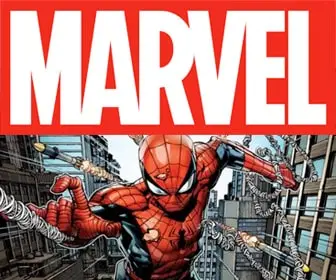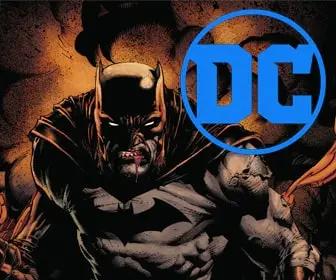
The Colorful Evolution: How Tech Transformed Comic Book Art
A World of Color
Imagine your favorite superhero comic without any color. Sure, the bold lines and dynamic action might still be there, but something would be missing. Color isn’t just a pretty addition to comic books; it’s a powerful storytelling tool. A vibrant red explosion adds a punch to a fight scene, while cool blues and purples set an eerie mood for a nighttime adventure. Just like a well-written script or detailed illustrations, color choices play a crucial role in bringing a comic book to life.
But how comic books get their color has changed dramatically over the years. This article explores how technology has revolutionized the way comic book artists bring their stories to life. We’ll journey from the early days of limited color palettes and hand-tinting to the mind-blowing possibilities of digital coloring software. Buckle up, because we’re about to see how technology has transformed the world of comic book color!
The Early Days (Pre-1960s): Coloring by Hand, One Page at a Time
Imagine coloring a whole comic book with just a handful of markers! That was the reality for comic book artists in the early days, before the 1960s. Back then, coloring comics was a super time-consuming process done entirely by hand. Colorists would use a technique called hand-tinting, which involved carefully applying thin layers of colored dyes or inks to the black and white artwork, often using stencils or brushes.
This wasn’t exactly a walk in the park. Hand-tinting demanded a lot of patience and precision. It was difficult to achieve smooth blending between colors, and keeping things consistent across multiple pages could be a challenge. But despite the limitations, some truly iconic colorists emerged from this era, using their skills to create unforgettable visuals in comics.
The Rise of Mechanical Techniques (1960s-1980s): Tools for Faster, Fancier Coloring
The 1960s brought a welcome change for comic book colorists: the arrival of mechanical tools! Imagine trading in your markers for special sheets filled with ready-made colors and textures. These sheets, called Zipatone tones and Letraset sheets, were a game-changer. Colorists could stick these pre-made patterns directly onto the artwork, creating effects like dots, stripes, and even halftone gradients.
So, what made these tools so great? First, they were a lifesaver in terms of speed. Coloring a whole comic became much faster with pre-made patterns. Second, they opened the door to a wider range of effects. Suddenly, artists could add things like shiny metallics, starry night skies, or even brick walls – all with a simple stick! This newfound freedom allowed colorists to experiment more with their choices and create even more visually interesting comics.
Of course, there were still some challenges. Sticking down these pre-made patterns took some practice, and sometimes the results could look a little repetitive. But overall, mechanical coloring tools were a big leap forward for the comic book industry, paving the way for even more exciting advancements in the future.
The Digital Revolution (1990s-Present): Coloring Goes Digital!
Fast forward to the 1990s, and get ready for a real revolution in comic book coloring: the rise of digital tools! Imagine coloring a whole comic on a computer, with a palette containing millions of colors instead of just a handful. That’s the magic of digital coloring software like Photoshop and ComicStudio.
These programs are like super-powered paintbrushes for the digital age. Colorists can now choose from an endless spectrum of colors, apply special effects like lighting and shadows with a click, and even undo mistakes easily. Plus, digital coloring allows for much smoother blending and gradients, creating a more realistic and visually stunning look.
But it’s not all about fancy effects. Digital tools also make collaboration between artists much easier. Imagine a colorist working on a scene in New York while the artist drawing the characters is in California! Digital tools allow them to share files and work on the same page (virtually) – a huge leap forward compared to the days of mailing physical artwork back and forth.
Of course, with great power comes great responsibility! There’s a risk of getting caught up in all the cool digital effects and forgetting the importance of storytelling. A good colorist still needs to make thoughtful choices about color to enhance the mood and emotions of the scene.
But overall, the digital revolution has opened up a universe of possibilities for comic book coloring. With these powerful tools, artists can create richer atmospheres, more nuanced emotions, and truly bring their stories to life in a whole new way.
The Future of Comic Book Coloring: A Bright and Bold Palette Awaits
The world of comic book coloring is constantly evolving! Even today, new technologies are emerging, like 3D coloring techniques that can add even more depth and dimension to the artwork. Who knows what amazing tools the future holds? Maybe colorists will be able to use virtual reality to step right into the world of the comic book and paint the scene directly!
One thing’s for sure: technology will continue to push the boundaries of what’s possible in comic book coloring. But there will always be a place for the artistic touch of a skilled colorist. The best coloring will use the latest tools to tell a story, not overshadow it.
So, the next time you pick up a comic book, take a moment to appreciate the colors. From the limited palettes of the early days to the mind-blowing possibilities of the digital age, color has always played a vital role in bringing comic book stories to life. And with the ever-expanding palette of technology at their disposal, comic book colorists are sure to keep creating amazing visuals that will entertain and inspire readers for years to come!















